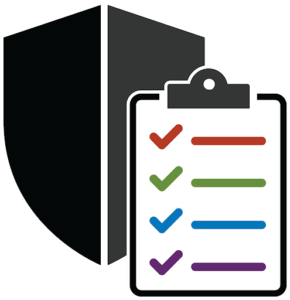Accelerate Success with AI-Powered Test Automation – Smarter, Faster, Flawless
Start free trialRecent tragedy in Beirut is a classic example of how an oversight led to a disaster causing major damage and claiming human lives. 7 years ago a cargo ship loaded with ammonium nitrate was confiscated by port authorities over non payment of dues. For all these years, the officials didn’t bother handling it with care. It was a clear oversight on their part to treat it as just another cargo, without realizing that it was a potential disaster waiting to happen. Had they been proactive in handling it appropriately as per the explosive protocols and guidelines, the tragedy could have been averted. Drawing a parallel in the world of software, any oversight or loophole in applications may lead to failure of gigantic proportions.
3 years ago, there was a major data leak in American Credit Bureau Equifax. Private records of millions of citizens were compromised, leaving them vulnerable to identity theft. Hackers found a loophole to exploit when an important security patch was not updated. During the investigation, it was revealed that Equifax was aware of the vulnerability in their system, and the failure to install the patch on time led to one of the largest data breaches known.
Another example that can be quoted is of Zoombombing. A lot of emphasis has been there on online education these days due to the recent pandemic. Zoom gained instant popularity at the beginning of the Covid-19 lockdown because it was easily accessible and intuitive to use. But soon, numerous cases of zoom-bombing were being reported. The need of the hour was to plugin that loophole which allowed access to the cyber intruder. But the basic question still went unanswered, “How and why did the app go live with such a major bug?”
There are huge stakes involved when it comes to data analysis, engineering applications, finance applications, business, and many more such fields. The rate at which the digital world is guzzling and spewing data calls for airtight security policies for applications.
Application security is not optional, it is a mandate.
Numerous factors have to be considered and tested, but security testing holds the key to the first line of defense for the digital fortress.
This article will walk you through a few important points to consider for security testing.
Shift-Left Approach

The biggest folly while planning and designing is to keep security testing for a later stage, just before deployment.
Ideally, a shift left approach should be followed, which essentially means to consider a proper security threat analysis and create a test plan while designing the application. High risks without counter plans result in failures. Sometimes, critical loopholes are hidden in plain sight. It is worth spending time during the design phase than spending time later to find and fix the issues.
Be proactive

Security testing plans have to keep pace with the evolution of the design of the application. The rate at which new threats invade the digital world, any lag will have catastrophic consequences. It will be prudent to keep a tab on the latest available tools to counter any possible threats. With the increasing use of DevOps in large size projects, the testers have to perform tests frequently with every new change. This may take a toll on timelines if not planned and executed properly. If security testing is not included at all stages, then there will be a wide gap between security marker tests for code and the final product. It will be a good idea to automate maximum security tests. Another approach could be to include exploratory testing for finding unpredictable and unforeseen errors. Availing services of a third party to conduct penetration testing is another option worth considering.
Test More Frequently

Security testing tends to take a backseat while other aspects like performance and functionality get the biggest slice from the testing pie. In a best-case scenario, it is worthwhile to perform security testing with every change or introduction of any new feature, however small it may be. In fact, any hotfix may end up introducing a loophole which can open the flood gates. We have explored this in detail in one of our previous blogs “Security testing complemented with complete regression”. Do read it for a better understanding.
In case, the cost of testing is a concern, then a one-time investment for automated testing takes off the load and efforts later

Test Third Party Code and Plugins

It is a common practice to use open source code and third-party code to expedite the development process. The code handshake may leave room for errors. The external agency code may come with the baggage of its own vulnerabilities. It needs to be handled carefully before it metamorphosizes into a much bigger problem. It is not easy to debug the third party code.
A wiser approach would be to use reliable and time tested sources. Also, there are services that provide new vulnerabilities notification when they are found in open source packages and the patch to fix them.
Prioritize all Identified Risks

Every potential risk has to be prioritized for ensuring a robust security posture of the application. Not learning from past threats and not chalking out a threat assessment plan can prove to be a costly mistake in security test planning. Collating the historical threat data and combining it with projected threats gives a comprehensive list of potential threats. Attaching priorities to potential risk is a task that should be treated as a top priority in the security plan. This results in having a targeted plan in hand which optimizes the time and efforts involved in security testing.
Plugin Vulnerabilities

Think again if you feel that the intention of security testing is just to ensure that all security-related requirements are fulfilled against a predefined checklist. This is the worst presumption that can be made. It is not just about compliance, but to ensure that it does not crash or suffers security breaches due to unforeseen circumstances. The best approach is to conjure all possible scenarios which may lead to malicious attacks. Anticipating and preventing potential threats is the right way to conduct security testing.
Webomates Approach Towards Security Testing
Webomates is a PCI DSS compliance certified company, which is the most thorough and stringent global security standard in the payment card industry. We can convert your functional tests into security tests effortlessly.
We provide security testing of any application using following two security approaches:
- DAST
- FUZZER
Above mentioned security test approaches include more than 30 categories of security, including more than 13000 tests which helps in finding potential vulnerabilities. Examples of few high-level categories are SQL Injection, cross shell scripting, etc.
These tests not only find vulnerabilities, but also provide remedial solutions which can be used to fix the problems.
Generally, testing teams end up writing multiple scripts for security testing, which involves a lot of time and efforts. However, our solution uses the HAR files extracted from functional runs for security tests. Therefore, coding efforts required for running security tests with Webomates are reduced to nil.
Security testing requires SMEs to write test case scripts and for further analysing the results. Webomates security reports not only provide vuneralbilites, but also present a complete analysis for the failed tests with the solution description. Since our solution handles maximum work of analysis and defect prioritization, it reduces human involvement significantly at the testing stage. This not only helps in resource optimization, but also reduces the bug resolution time.
Webomates testing solution also adds the element of scalability to security testing without compromising the development speed or agility. It can seamlessly integrate in your CI/CD process. The QA team is empowered by executing automated security tests as a part of the unit testing process .
Conclusion
With the evolution of technology, systems have become more vulnerable to external security threats. Hence, protecting sensitive information becomes crucial to business growth and ensuring customer trust. Our customers can continue to use the Webomates CQ platform and achieve effortless software testing knowing that their sensitive client data is secure.
Besides application security, we also offer regression testing as a service that is a combination of test cases based on testing and exploratory testing. Test cases based testing establishes a baseline and uses a multi-execution channel approach, to reach true pass / true fail, using AI Automation, automation, manual, and crowdsourcing. Exploratory testing expands the scope of the test to take the quality to the next level. Service is guaranteed to do both and even covers updating test cases of modified features during execution in 24 hours.
At Webomates, we work relentlessly to evolve our platform and processes in order to provide guaranteed execution, which takes testing experience to an entirely different level, thus ensuring a higher degree of customer satisfaction.If you are interested in learning more about Webomates’ CQ service please click here and schedule a demo, or reach out to us at info@webomates.com
Tags: Devsecops, Security Testing

Leave a Reply